Asus uses its own design for this board. The two 8-pin sockets for the external power supply are followed by two coils in the input area for smoothing the tips.
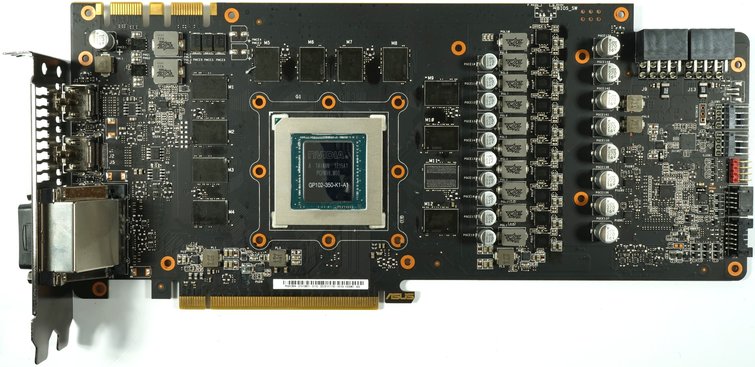
Asus relies on a 5+2 phase design, doubling the 5 phases for the GPU. For example, two parallel control circuits are available per phase. The two phases for memory are at the top left.
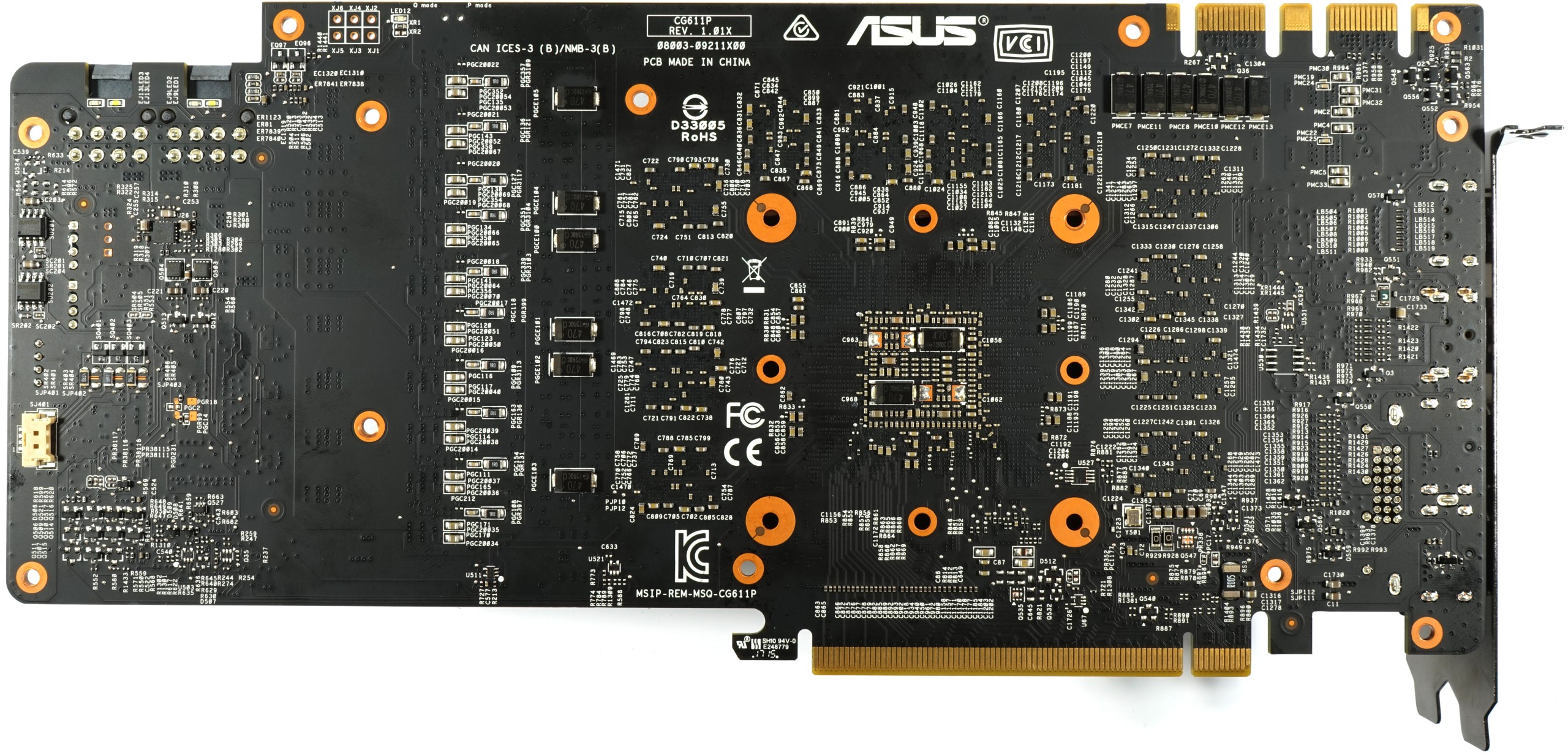
The back looks tidy and houses, among other things. PWM controller for memory.
GPU Power Supply |
||
|---|---|---|
| PWM Controller | uP 9511 UPI Semiconductor 6+2 phases max. 5 used (doubled) |
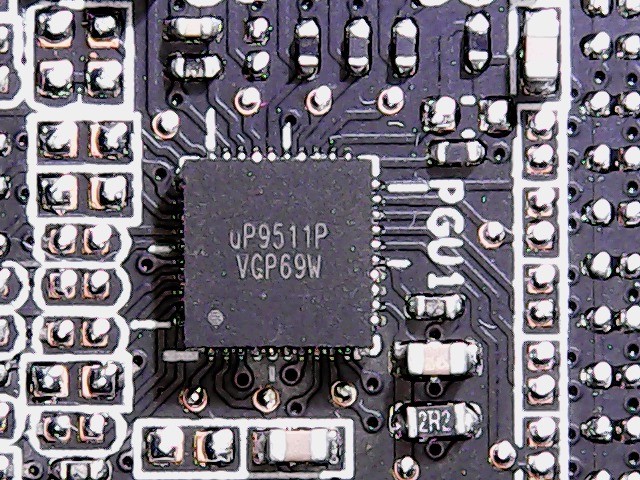 |
| Vrm | IR3555M International Rectifier PowIRstage High – & Low-Side Schottky Diode |
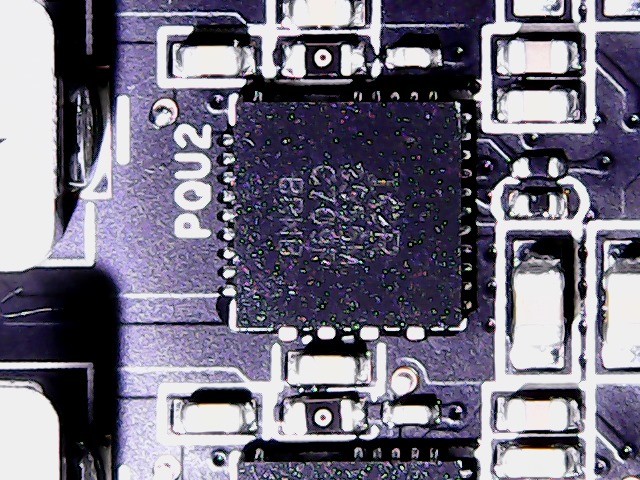 |
| Coils | SAP II Super Alloy Power Ferrite core coils |
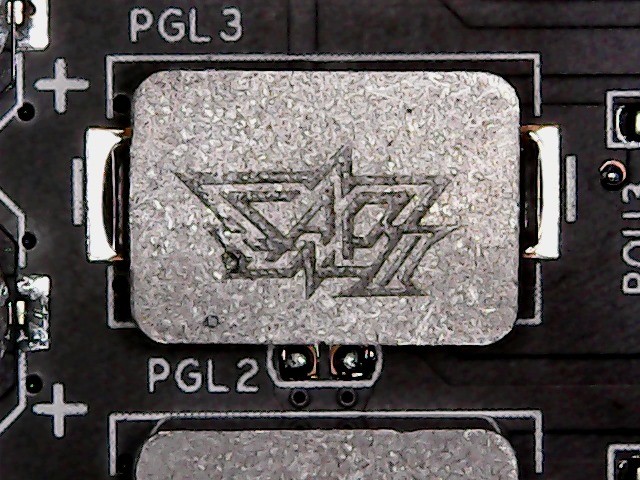 |
Memory and power supply |
||
| Modules | MT58K256M321-Ja110 Micron 11 Modules GDDRX5 11 GByte/s 5500 MHz (effective) |
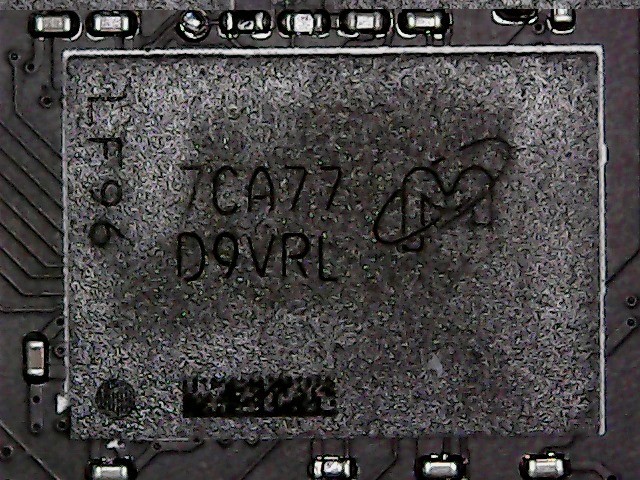 |
| PWM Controller | uP 9013 UPI Semiconductor 2 phases |
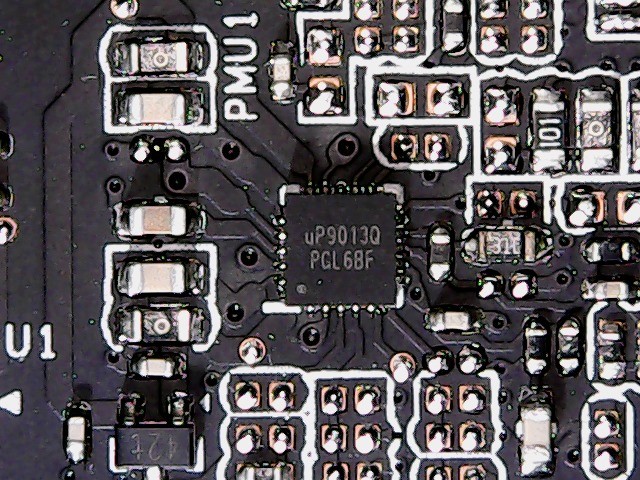 |
| Vrm | FDPC5018SG Fairchild PowerTrench MOSFETs High – & Low-Side Schottky Diode
|
 |
| SAP II Super Alloy Power Ferrite core coils 220 nH |
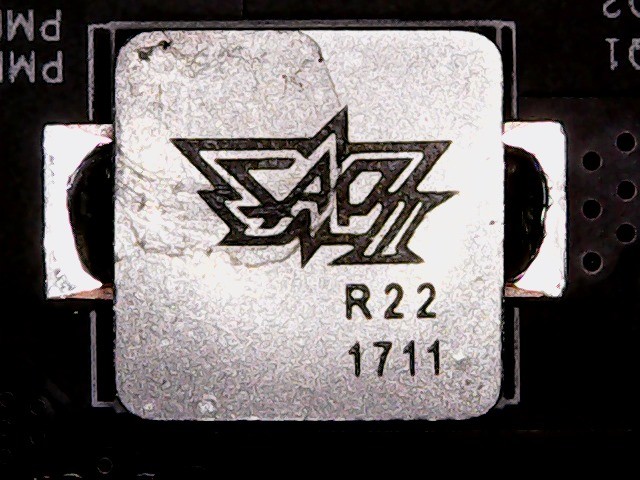 |
|
Other components |
||
| Monitoring | INA3221 Monitoring Chip Currents, voltages |
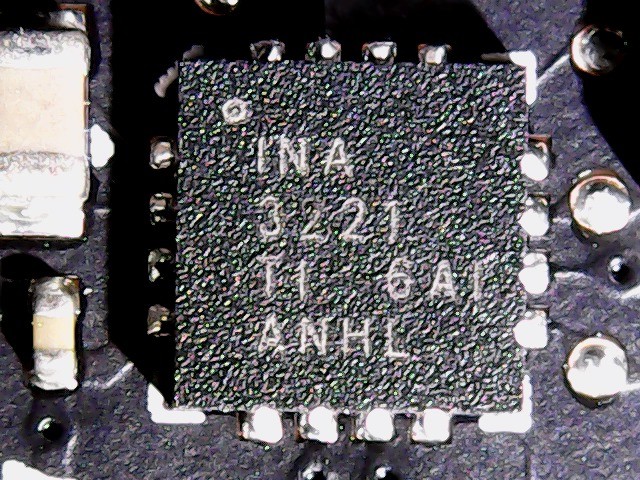 |
| Fan Control |
8915FN Ite Fan Control Monitoring |
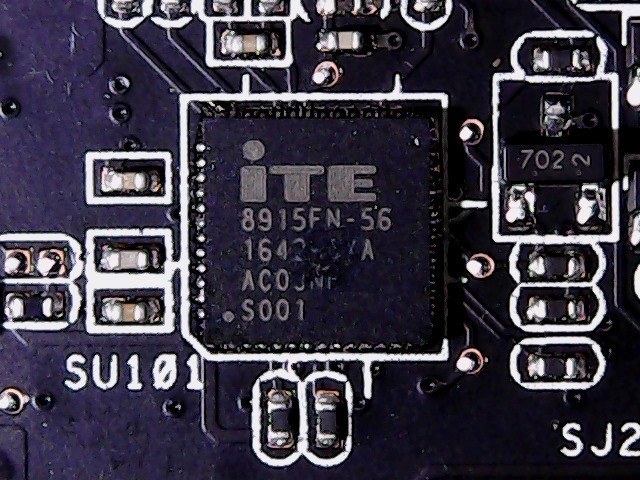 |
| Bios | Winbond 25Q40 Kynix Semiconductor Eeprom Single BIOS |
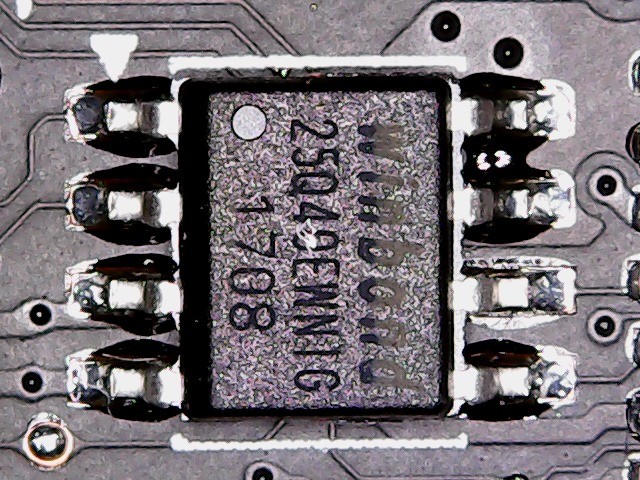 |
More details |
||
| Other Features |
– 2x 8-pin PCI-Express connectors for power supply – Filter coils in the entrance area – Controlled fan connection for housing fans – RGB outputs for your own GGB stripes – Voltage taps and other measuring points |
|
- 1 - Einführung und Übersicht
- 2 - Platine und Spannungsversorgung im Detail
- 3 - Gaming Performance: 2560 x 1440 Pixel (WQHD)
- 4 - Gaming-Performance: 3840 x 2160 Pixel (Ultra-HD)
- 5 - Leistungsaufnahme Im Detail
- 6 - Temperaturen, Taktraten, OC und Wärmebildanalyse
- 7 - Kühlerdetails und Geräuschentwicklung
- 8 - Zusammenfassung und Fazit
































Kommentieren